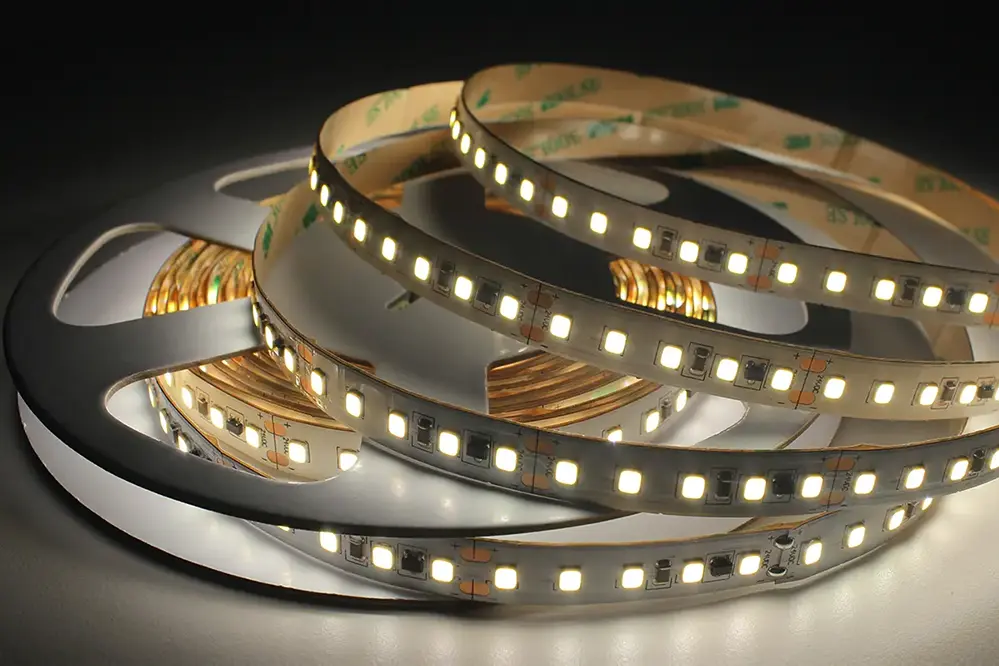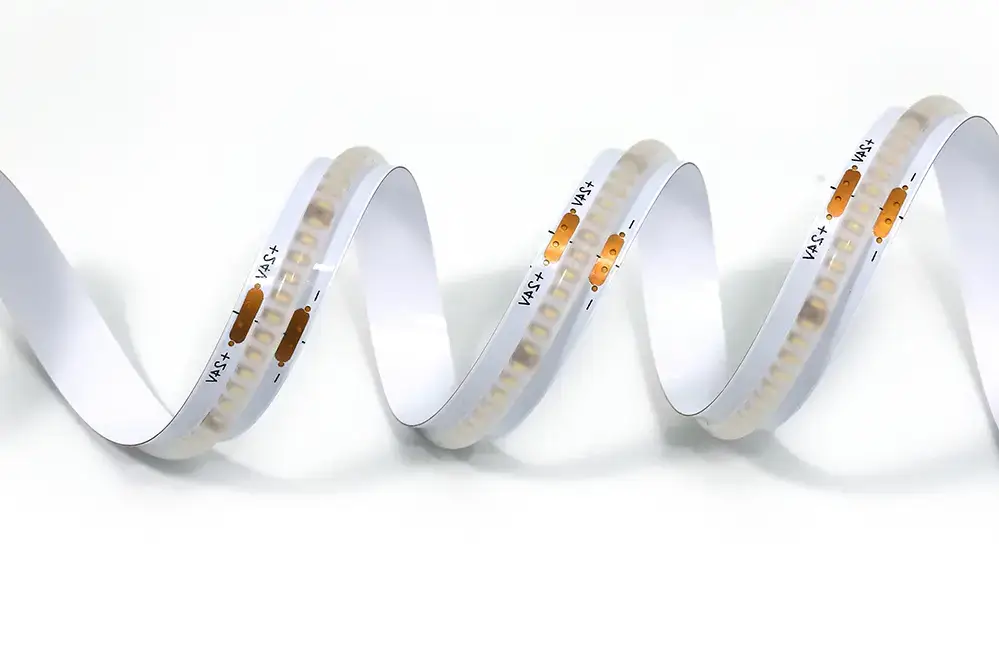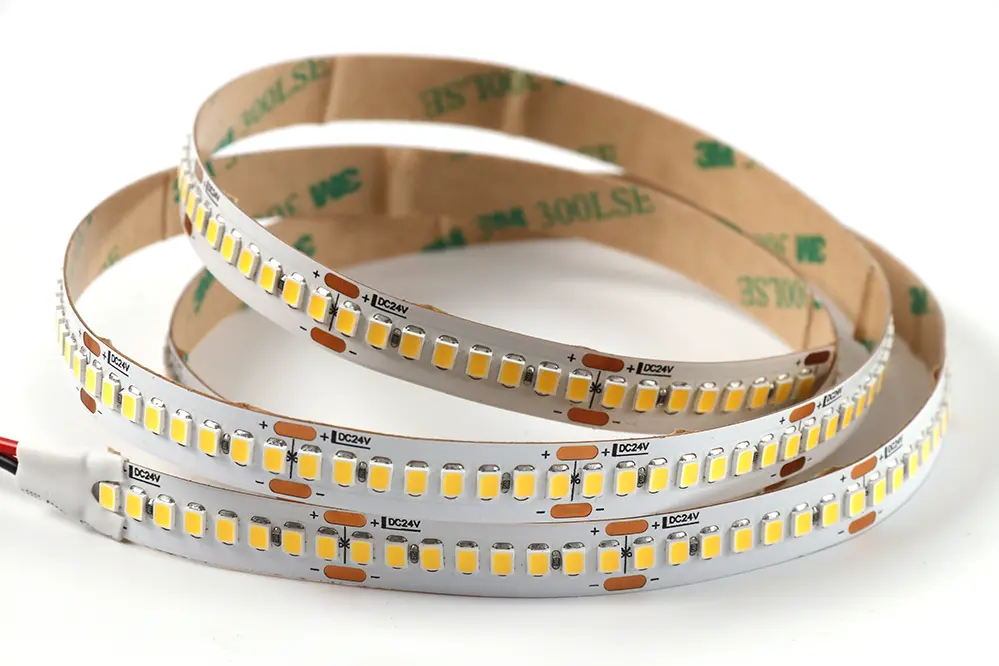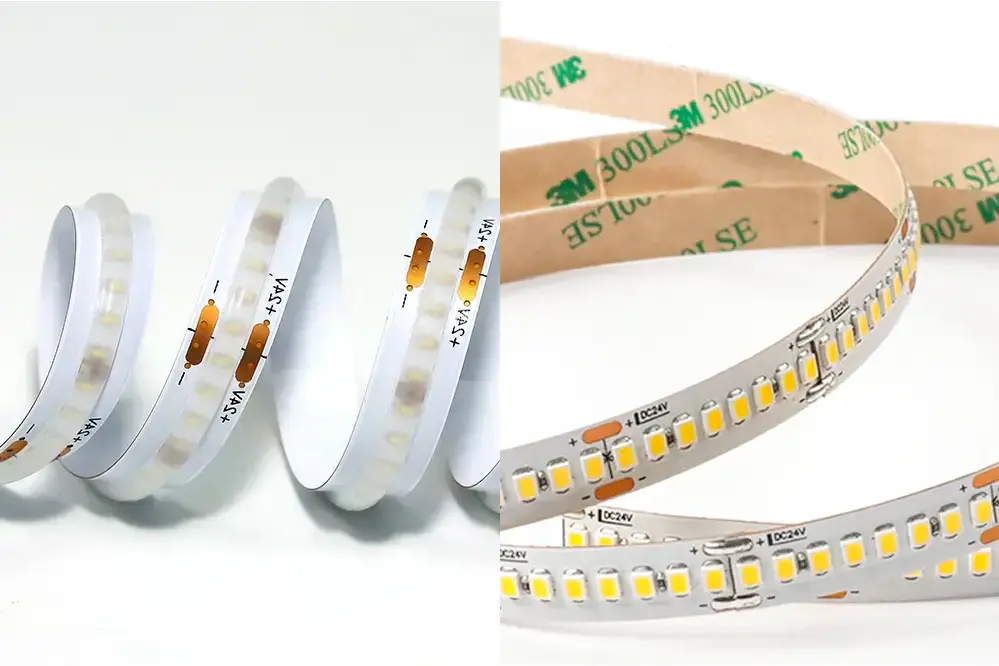In the ever-evolving world of lighting technology, CSP LED strips, incorporating advanced led chips, and other LED strips have become a popular choice for both residential and commercial applications. Their energy efficiency, long lifespan, and versatility make them an attractive option for a wide range of lighting needs. Among the various types of LED strips available, CSP (Chip Scale Package) and SMD (Surface Mounted Device) LED strips stand out as two of the most commonly used due to their durability. But which one is better? In this comprehensive guide, we will delve into the differences between CSP and SMD LED strips, exploring their unique advantages and applications to help you make an informed decision.
Key Takeaways
- CSP LED Strips offer superior brightness and efficiency due to their advanced packaging technology.
- SMD LED Strips are more common and versatile, suitable for a wide range of applications.
- Both types have unique advantages, making them better suited for specific uses.
Part 1: Understanding LED Strips

What are LED Strips?
LED strips are flexible circuit boards populated with light-emitting diodes (LEDs) that are used for various lighting applications. They come in different shapes, sizes, and types, with the most common being SMD (Surface Mounted Device) and CSP (Chip Scale Package) LEDs. These strips are popular in both residential and commercial settings due to their energy efficiency, long lifespan, and versatility.
LED strips can be used for accent lighting, task lighting, and even primary lighting in some cases. They are available in various colors, including white, warm white, and RGB (red, green, blue), allowing for a wide range of lighting effects and moods. The flexibility of LED strips makes them ideal for custom installations, where they can be cut to size and shaped to fit specific spaces.
Overview of CSP LED Strips

CSP LEDs, such as those found in CSP LED strip products, are a type of LED that eliminates the need for traditional packaging by scaling the LED chip itself to the package size. This technology allows for higher light output, better heat dissipation, and a more compact design.
Benefits:
- Higher brightness and efficiency: CSP LEDs are designed to maximize light output while minimizing energy consumption. This makes them ideal for applications where high brightness is required, such as commercial lighting and high-end residential projects.
- Improved heat dissipation: The compact design allows for better thermal management, enhancing the lifespan and performance of the LEDs. This is particularly important in high-power applications where overheating can be a concern.
- Compact and lightweight: Ideal for applications where space is limited and high brightness is required. CSP LEDs are often used in automotive lighting, compact electronic devices, and other space-constrained applications.
Overview of SMD LED Strips

SMD LEDs are mounted directly onto the surface of a circuit board. They are the most commonly used type of LED in strip lighting due to their versatility and wide availability.
Benefits:
- Versatile and widely available: SMD LEDs are used in a variety of applications, from accent lighting to large-scale installations. Their versatility makes them suitable for both residential and commercial settings.
- Cost-effective: Generally more affordable than CSP LEDs, making them a popular choice for DIY projects and budget-conscious installations.
- Easy to install and maintain: Their design allows for straightforward installation and maintenance. SMD LED strips can be easily cut to size and shaped to fit specific spaces, making them ideal for custom installations.
Part 2: Comparing CSP and SMD LED Strips
Brightness and Efficiency
CSP LEDs generally offer higher brightness and efficiency compared to SMD LEDs. This is due to their advanced design, which maximizes light output and minimizes energy loss. For instance, CSP LEDs can achieve a luminous efficacy of up to 200 lumens per watt, whereas SMD LEDs typically range between 100-150 lumens per watt. This makes CSP LEDs ideal for applications requiring intense illumination, such as commercial lighting and high-end residential projects.
In addition to their higher luminous efficacy, CSP LEDs also offer better color rendering, which means they can produce more accurate and vibrant colors. This is particularly important in applications where color accuracy is critical, such as retail displays and art galleries.
Heat Dissipation
CSP LEDs are designed for better heat dissipation, which enhances their lifespan and performance. This makes them ideal for high-power applications where overheating can be a concern. In contrast, SMD LEDs also dissipate heat effectively but may require additional heat sinks or cooling mechanisms for high-power setups. For example, in a high-output lighting installation, CSP LEDs might operate at lower temperatures compared to SMD LEDs, reducing the risk of thermal degradation.
Effective heat dissipation is crucial for maintaining the performance and longevity of LED strips. Overheating can lead to reduced light output, color shifting, and even premature failure of the LEDs. By choosing LED strips with good thermal management, you can ensure reliable and long-lasting performance.
Flexibility and Design
SMD LED Strips are highly flexible and can be cut to size, making them suitable for custom installations. They are available in various colors and can be easily integrated into different designs. This flexibility makes SMD LEDs perfect for accent lighting, under-cabinet lighting, and decorative purposes. On the other hand, CSP LED Strips are less flexible due to their compact design. They are best used in applications where space is limited and high brightness is needed, such as in automotive lighting or compact electronic devices.
The flexibility of SMD LED strips also makes them ideal for creating dynamic lighting effects. For example, RGB SMD LED strips can be used to create color-changing effects, adding a touch of excitement and creativity to any space.
Cost and Availability
SMD LEDs are generally more affordable and widely available compared to CSP LEDs, making them ideal for various applications like led strip lights. This makes them a popular choice for DIY projects and large-scale installations. For example, a homeowner looking to install accent lighting in their living room might opt for SMD LEDs due to their lower cost and ease of installation. CSP LEDs, however, tend to be more expensive due to their advanced technology and higher performance. They are often used in professional and commercial applications where quality is paramount, such as in architectural lighting or high-end retail displays.
The cost of LED strips can vary significantly depending on factors such as the type of LEDs used, the quality of the components, and the length of the strip. When comparing prices, it’s important to consider the overall value and performance of the LED strips, rather than just the initial cost.
Part 3: Applications and Use Cases
Residential Lighting
In residential settings, LED strips are commonly used for accent lighting, task lighting, and decorative purposes. SMD LED strips are particularly popular for these applications due to their flexibility, affordability, and ease of installation. For example, SMD LED strips can be used to highlight architectural features, create mood lighting in living rooms and bedrooms, or provide task lighting under kitchen cabinets.
CSP LED strips, on the other hand, are ideal for applications where high brightness and compact design are required. For instance, CSP LED strips can be used in home theaters to provide bright and uniform lighting without taking up much space.
Commercial Lighting
In commercial settings, LED strips are used for a wide range of applications, from general lighting to accent lighting and signage. CSP LED strips are often preferred for commercial applications due to their higher brightness, efficiency, and superior heat dissipation. For example, CSP LED strips, alongside led strip lights, can be used in retail displays to highlight products and create an inviting atmosphere for customers.
SMD LED strips are also widely used in commercial settings, particularly for accent lighting and decorative purposes. For instance, SMD LED strips can be used to create eye-catching lighting effects in restaurants, hotels, and entertainment venues.
Automotive Lighting
In the automotive industry, LED strips are used for both interior and exterior lighting. CSP LED strips are particularly well-suited for automotive applications due to their compact design, high brightness, and excellent heat dissipation. For example, CSP LED strips can be used for headlights, taillights, and interior accent lighting.
SMD LED strips are also used in automotive lighting, particularly for decorative and accent lighting. For instance, SMD LED strips can be used to create custom lighting effects in car interiors, such as under-dash lighting or ambient lighting.
Outdoor Lighting
LED strips are also used for outdoor lighting applications, such as landscape lighting, pathway lighting, and outdoor signage. CSP LED strips are ideal for outdoor applications where high brightness and compact design are required. For example, CSP LED strips can be used in outdoor signage to provide bright and uniform illumination.
SMD LED strips are also used for outdoor lighting, particularly for decorative and accent lighting. For instance, SMD LED strips can be used to create stunning lighting effects in gardens, patios, and outdoor entertainment areas.
Part 4: Installation and Maintenance
Installation Tips
Installing LED strips can be a straightforward process, but there are a few tips to keep in mind to ensure a successful installation:
- Measure and Plan: Before installing LED strips, measure the area where you plan to install them and plan the layout. This will help you determine the length of the LED strips needed and where to make any necessary cuts.
- Clean the Surface: Ensure that the surface where you will be installing the LED strips is clean and dry. This will help the adhesive backing on the LED strips adhere properly.
- Use Proper Power Supply: Make sure to use a power supply that matches the voltage and current requirements of the LED strips. Using an incorrect power supply can damage the LED strips and reduce their lifespan.
- Secure Connections: Ensure that all connections are secure and properly insulated to prevent short circuits and ensure reliable performance.
- Test Before Final Installation: Before finalizing the installation, test the LED strips to ensure they are working properly. This will help you identify any issues before securing the LED strips in place.
Maintenance Tips
LED strips are generally low-maintenance, but there are a few tips to keep in mind to ensure their longevity and performance:
- Keep Clean: Regularly clean the LED strips to remove dust and debris that can accumulate over time. Use a soft cloth or brush to gently clean the surface of the LED strips.
- Check Connections: Periodically check the connections to ensure they are secure and free from corrosion. Loose or corroded connections can affect the performance of the LED strips.
- Avoid Overheating: Ensure that the LED strips have adequate ventilation to prevent overheating. Overheating can reduce the lifespan of the LEDs and affect their performance.
- Replace Damaged Sections: If any sections of the LED strips become damaged, replace them promptly to prevent further issues. Most LED strips can be easily cut and reconnected, making it simple to replace damaged sections.
FAQs
What is the lifespan of CSP vs. SMD LED strips?
Both CSP and SMD LED strips have long lifespans, typically ranging from 30,000 to 50,000 hours. However, CSP LEDs may have a slight edge due to their superior heat dissipation. For instance, in a high-temperature environment, CSP LEDs might maintain their performance longer than SMD LEDs, extending their useful life.
Can I use CSP LED strips for outdoor lighting?
Yes, CSP LED strips can be used for outdoor lighting, especially in applications requiring high brightness and compact design. Ensure they have proper weatherproofing. For example, CSP LEDs can be used in outdoor signage or landscape lighting, where their high brightness and compact size are advantageous.
Are SMD LED strips suitable for accent lighting?
Absolutely. SMD LED strips are versatile and perfect for accent lighting due to their flexibility and variety of available colors. They can be used to highlight architectural features, create mood lighting, or add decorative elements to a space.
Do CSP LEDs require special installation tools?
Not necessarily. While CSP LEDs may require more careful handling due to their compact size, they do not need special tools for installation. Standard tools used for SMD LED installations, such as soldering irons and wire cutters, are typically sufficient.
Which is better for energy efficiency?
CSP LEDs are generally more energy-efficient due to their design, which maximizes light output while minimizing energy consumption. For example, in a commercial setting where energy costs are a significant concern, CSP LEDs might offer substantial savings over time compared to SMD LEDs.
Conclusion
Choosing between CSP and SMD LED strips depends on your specific needs and applications. CSP LEDs offer superior brightness, efficiency, and heat dissipation, making them ideal for high-performance and space-constrained applications. On the other hand, SMD LEDs are versatile, cost-effective, and easy to install, making them suitable for a wide range of uses, from accent lighting to large-scale installations. Whether you are a lighting enthusiast or a professional, understanding the differences between CSP and SMD LED strips will help you make an informed decision. By considering factors such as brightness, heat dissipation, flexibility, cost, and availability, you can select the LED strip that best meets your requirements and enhances your lighting projects. By leveraging the unique advantages of each type of LED strip, you can create stunning lighting effects that enhance the ambiance and functionality of any space. By following the installation and maintenance tips provided, you can ensure that your LED strips perform reliably and last for many years to come. With the right choice of LED strips and proper care, you can enjoy the benefits of energy-efficient, versatile, and high-quality lighting in any application.
For those seeking high-quality LED strip lights and LED neon strips, consider contacting Unitop, a professional Chinese manufacturer renowned for their expertise and quality products. Unitop offers a wide range of LED solutions tailored to meet various lighting needs, ensuring you receive the best performance and value for your projects. Reach out to Unitop to explore their offerings and find the perfect LED strips to elevate your lighting experience.





